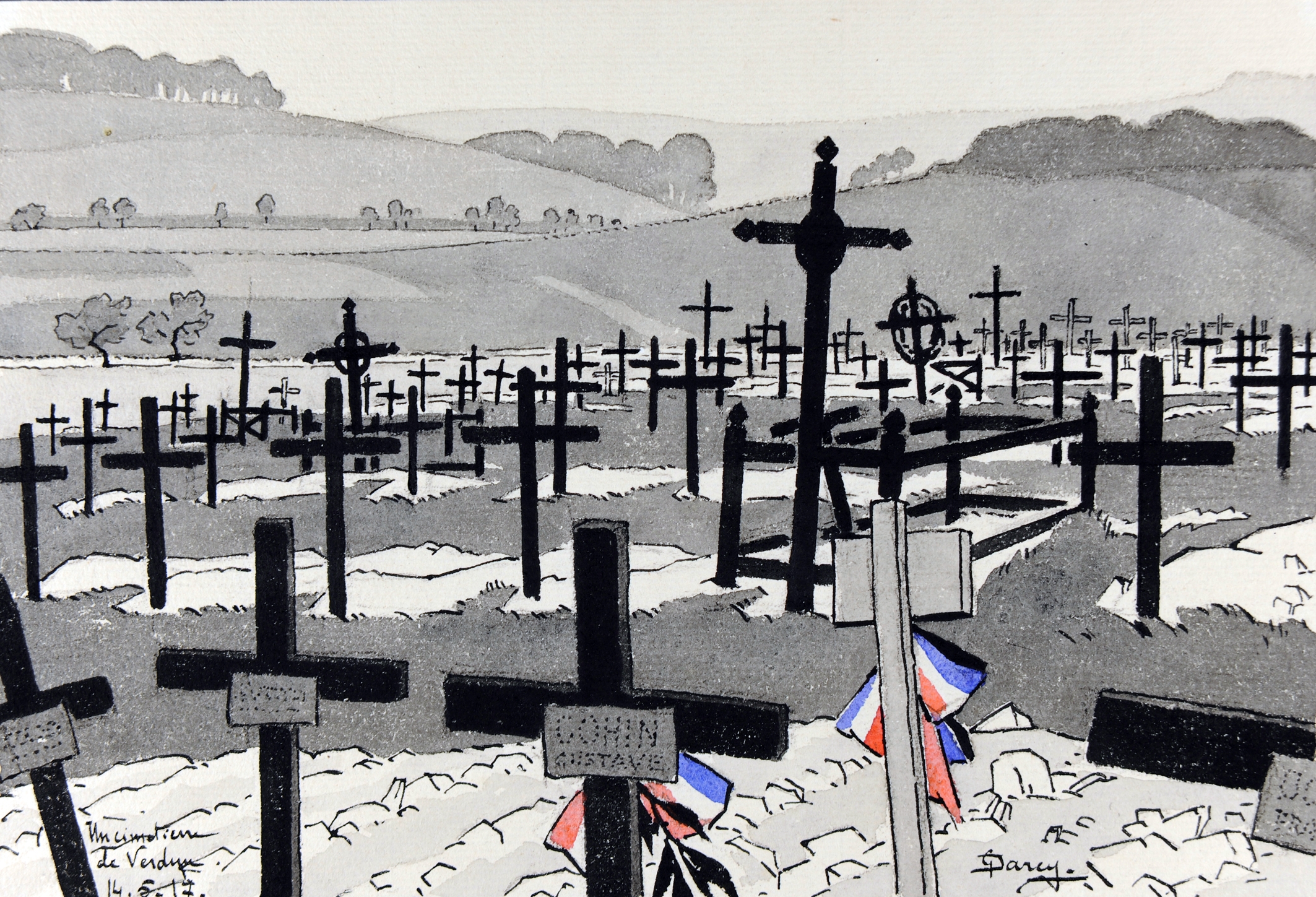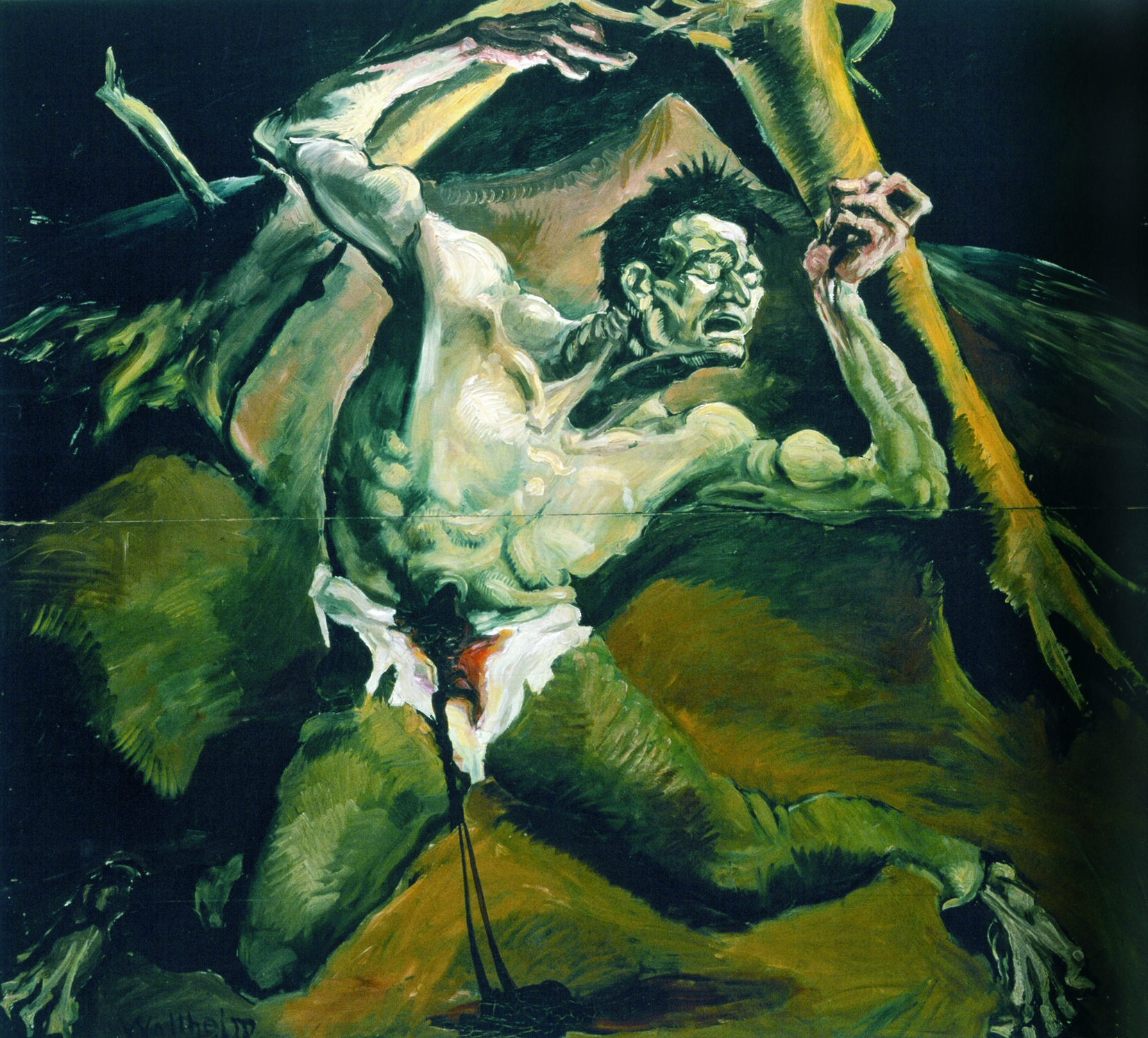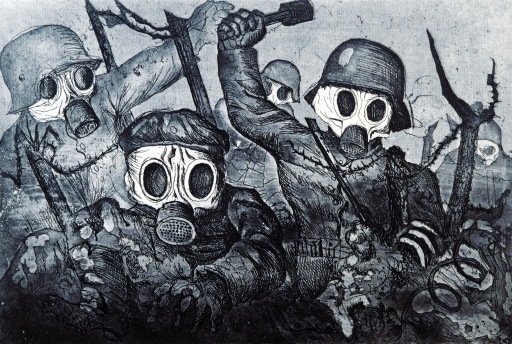The Von der Heydt Museum in Germany is hosting an exhibition entitled The Slaughterhouse of Man, which explores how French and German artists responded to the First World War.
It opened on the 8th April and will run until the 27th July 2014.
Working with the Musée des Beuax-Arts in Reims, France, the exhibition has been developed with the history of Reims during the conflict in mind.
It was the first French city to be bombarded by German forces in 1914, with the deaths of many civilians and the almost complete destruction of its cathedral.
The cathedral had served for centuries as the site for the coronation of France’s kings and therefore had a special symbolic importance.
 ‘A Cemetery at Verdun’, Georges-Edouard Darcy, 1917, Musée des Beaux-Arts Reims
‘A Cemetery at Verdun’, Georges-Edouard Darcy, 1917, Musée des Beaux-Arts Reims
There are approximately 350 works on display, divided into ten sections, beginning with art before 1914, through to the artists’ experiences of the conflict, to life on the front line, then on to Reims and the ruins. The exhibition concludes with an exploration of art in post-war France and Germany.
There are 160 artworks from France being lent to the exhibition, with 180 more from the Von der Heydt Museum’s own collections. Visual art and literature feature most prominently, while documentary film clips and photographs help to provide historical context.
 ‘The Wounded’, Gert Heinrich Wollheim, 1919, Privatbesitz Berlin, © 2014 Nachlass Gert Wollheim
‘The Wounded’, Gert Heinrich Wollheim, 1919, Privatbesitz Berlin, © 2014 Nachlass Gert Wollheim
The museum has said that the central theme to the exhibition is the question of how artists, including Germans Max Beckmann, Otto Dix and George Grosz, as well as Frenchmen Pierre Bonnard, Maurice Denis and Georges Rouault, came to terms “this world-shattering event” through their art.
Museum Director Dr. Gerhard Finkh, who is also curator of the exhibition, said: “Visitors should get a sense of just how harrowing this war truly was. We want to show how different the situations in both countries were at the start and at the end of the war, but also how similar the experiences of the soldiers and the artists who served actually were”.
Source: Von der Heydt Musuem press release
Posted by: Daniel Barry, Centenary News
